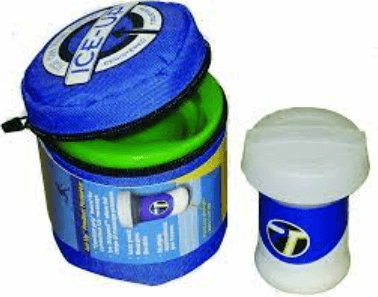Navigating the Chill: Common Mistakes in Medicine Ice Box Usage and Tips for a Smooth Ride

In the realm of healthcare, where precision is paramount, the storage and transportation of medicines demand careful consideration. Medicine ice boxes play a pivotal role in maintaining the efficacy of temperature-sensitive medications. However, as with any essential tool, there’s a potential for mishaps. In this guide, we delve into common mistakes users might make when handling ice boxes for medicine storage and offer insightful tips to ensure a smooth and reliable experience. As a bonus, we’ll touch upon the ultra low freezer to shed light on its relevance in certain contexts.
Mistake: Neglecting Proper Pre-Cooling of the Ice Box
One common oversight is neglecting the importance of pre-cooling the ice box before use. Failing to cool the ice box adequately before placing medications inside can compromise the temperature stability and, consequently, the effectiveness of the stored medicines.
Always pre-cool the ice box: Give your ice box ample time to reach its optimal temperature before loading it with medicines. This ensures a stable environment from the get-go, enhancing the overall performance of the ice box.
Mistake: Overloading the Ice Box Beyond its Capacity
It’s tempting to pack an ice box to its limit, especially in situations where storage space is limited. However, overloading the ice box can impede proper air circulation, hampering the cooling efficiency and potentially exposing medications to temperature fluctuations.
Follow capacity guidelines: Adhere to the manufacturer’s guidelines regarding the maximum capacity of the ice box. Overloading compromises its ability to maintain a consistent temperature, putting the stored medicines at risk.
Mistake: Inadequate Monitoring of Temperature Inside the Ice Box
One of the critical oversights is assuming that once medicines are inside the ice box, all is well. Failing to monitor the internal temperature can lead to unnoticed deviations, jeopardizing the potency of the stored medications.
Regularly check the temperature: Invest in a reliable thermometer and routinely check the internal temperature of the ice box. This proactive approach allows you to identify and address any temperature variations promptly.
Mistake: Incorrect Placement of Medications within the Ice Box
How medicines are placed inside the ice box matters. Placing medications too close to the cooling elements or near the ice source can result in uneven cooling, potentially exposing some medicines to suboptimal temperatures.
Ensure even distribution: Strategically place medications within the ice box, allowing for even air circulation. Avoid direct contact with cooling elements and ensure that every medication receives uniform cooling.
Mistake: Opening the Ice Box Frequently
Opening the ice box frequently, especially in warm environments, can lead to temperature fluctuations. Each time the ice box is opened, warm air infiltrates, and the cooling system must work harder to restore the optimal temperature.
Minimize openings: Plan ahead and retrieve all necessary items in a single access. Minimizing the frequency of opening the ice box helps maintain a stable temperature and preserves the effectiveness of stored medications.
Mistake: Using Improper Cooling Agents or Ice Packs
The choice of cooling agents matters. Using the wrong type of ice packs or cooling agents can result in inadequate temperature control, either causing medicines to freeze or allowing them to warm beyond the desired range.
Choose suitable cooling agents: Select cooling agents that are compatible with the specific temperature requirements of the medications. Gel packs designed for medical use are often a reliable choice.
Mistake: Ignoring Insulation Quality of the Ice Box
Overlooking the insulation quality of the ice box can be a critical error. Poor insulation compromises the ability of the ice box to maintain a steady temperature, especially in challenging environmental conditions.
Invest in high-quality insulation: Prioritize ice boxes with superior insulation materials. Quality insulation ensures that external temperatures have minimal impact on the internal environment, safeguarding the medications.
Mistake: Assuming All Ice Boxes are Universal
Not all ice boxes are created equal. Assuming that every ice box functions the same way can lead to suboptimal results, as different ice boxes may have unique features and specifications.
Familiarize yourself with the ice box: Read the user manual and familiarize yourself with the specific features and instructions for your ice box. Understanding its nuances helps optimize its performance.
Mistake: Using Damaged or Worn-Out Ice Boxes
Continuing to use an ice box that shows signs of wear and tear, such as damaged seals or cracks, compromises its ability to maintain the required temperature. This oversight can lead to unpredictable temperature fluctuations.
Regularly inspect and maintain the ice box: Perform routine checks on the ice box for any signs of damage. Promptly address issues such as damaged seals or cracks to ensure the ice box remains in optimal condition.
Mistake: Storing Medicines Too Close to Ultra-Low Freezers
While ultra-low freezers are excellent for preserving certain types of medications and samples, storing other medicines too close to these extremely low-temperature devices can result in unintended freezing, rendering them ineffective.
Maintain a safe distance:Be mindful of the proximity of medicines to ultra-low freezers. Store medications with different temperature requirements in separate areas to prevent unintentional freezing.
Conclusion
In the delicate dance of medicine storage, avoiding common mistakes with ice boxes is crucial to preserving the efficacy of temperature-sensitive medications. By adhering to proper usage tips and remaining vigilant in monitoring and maintenance, users can ensure a smooth and reliable experience ice box for medicine. With these insights, we navigate the chill with confidence, safeguarding the potency of every vial, every sample, and every medication in the journey of healthcare.





